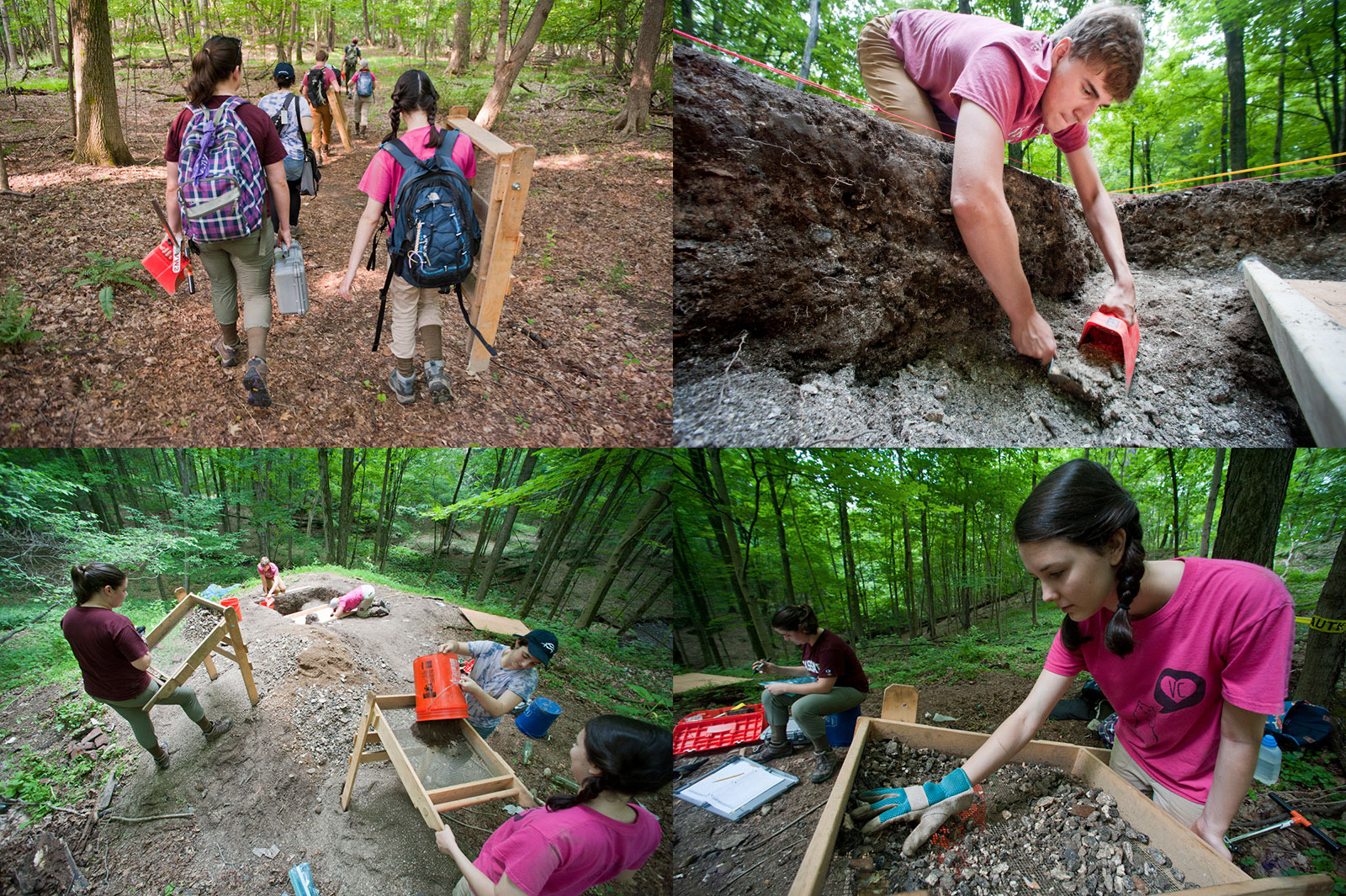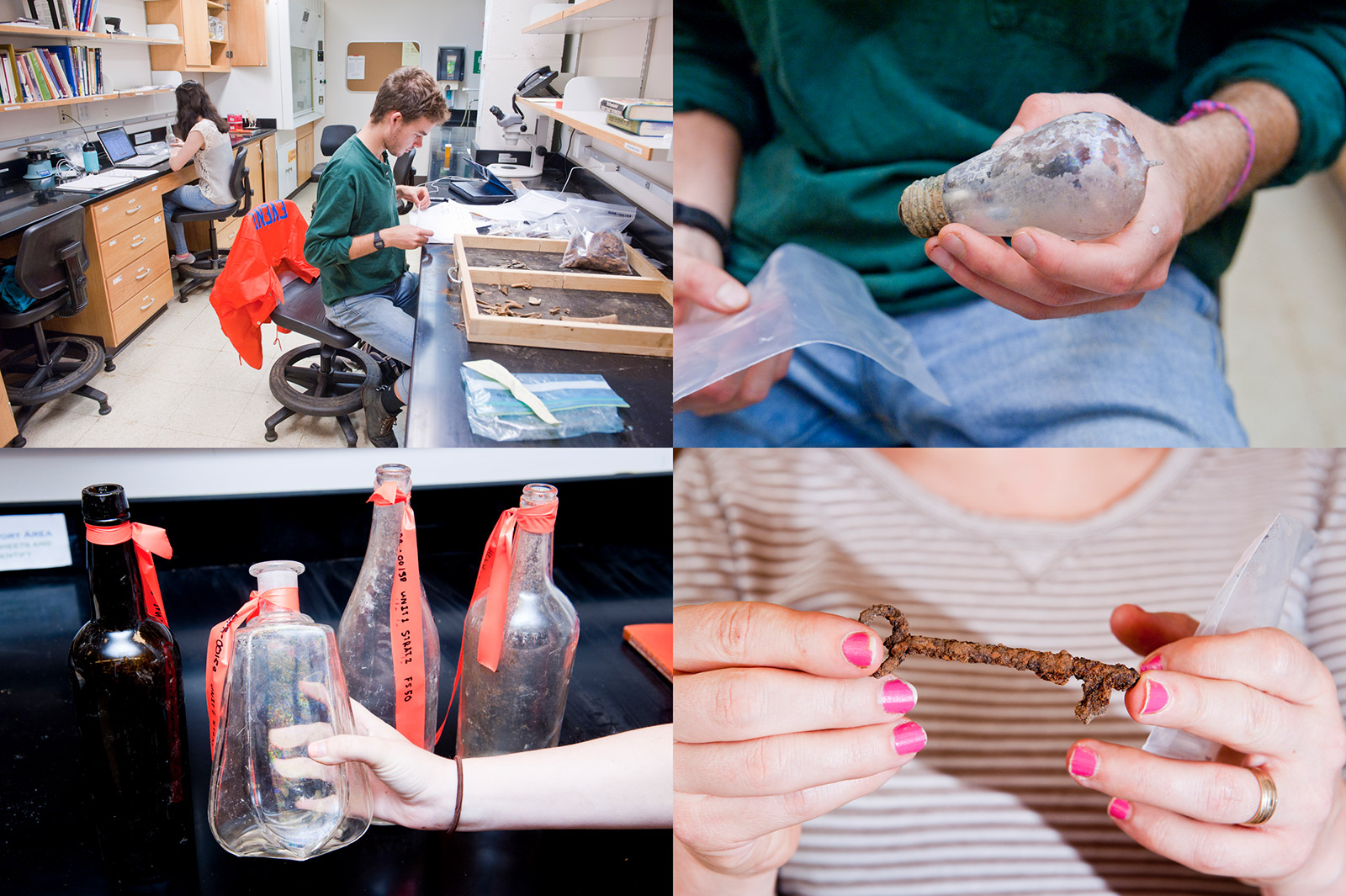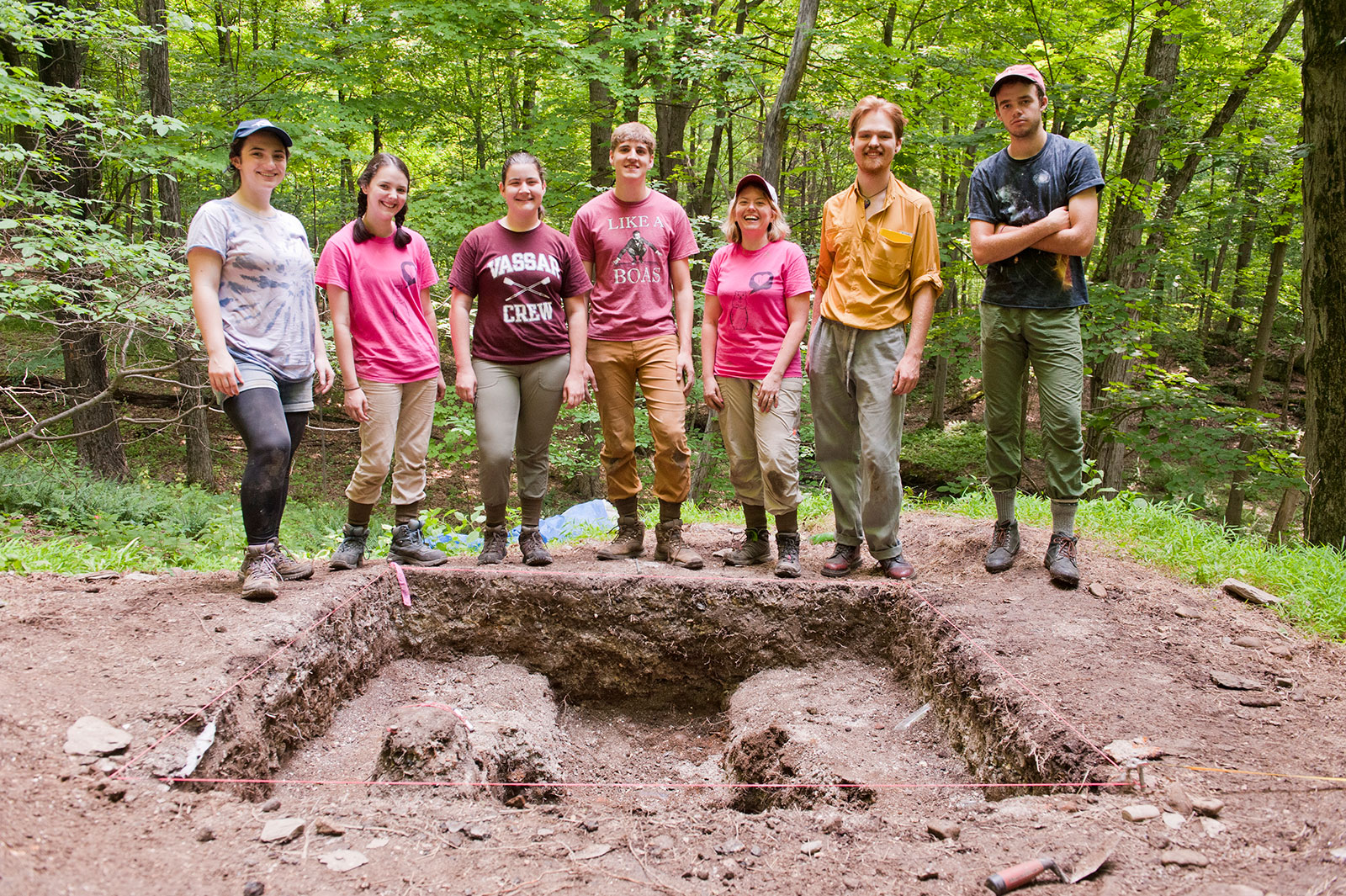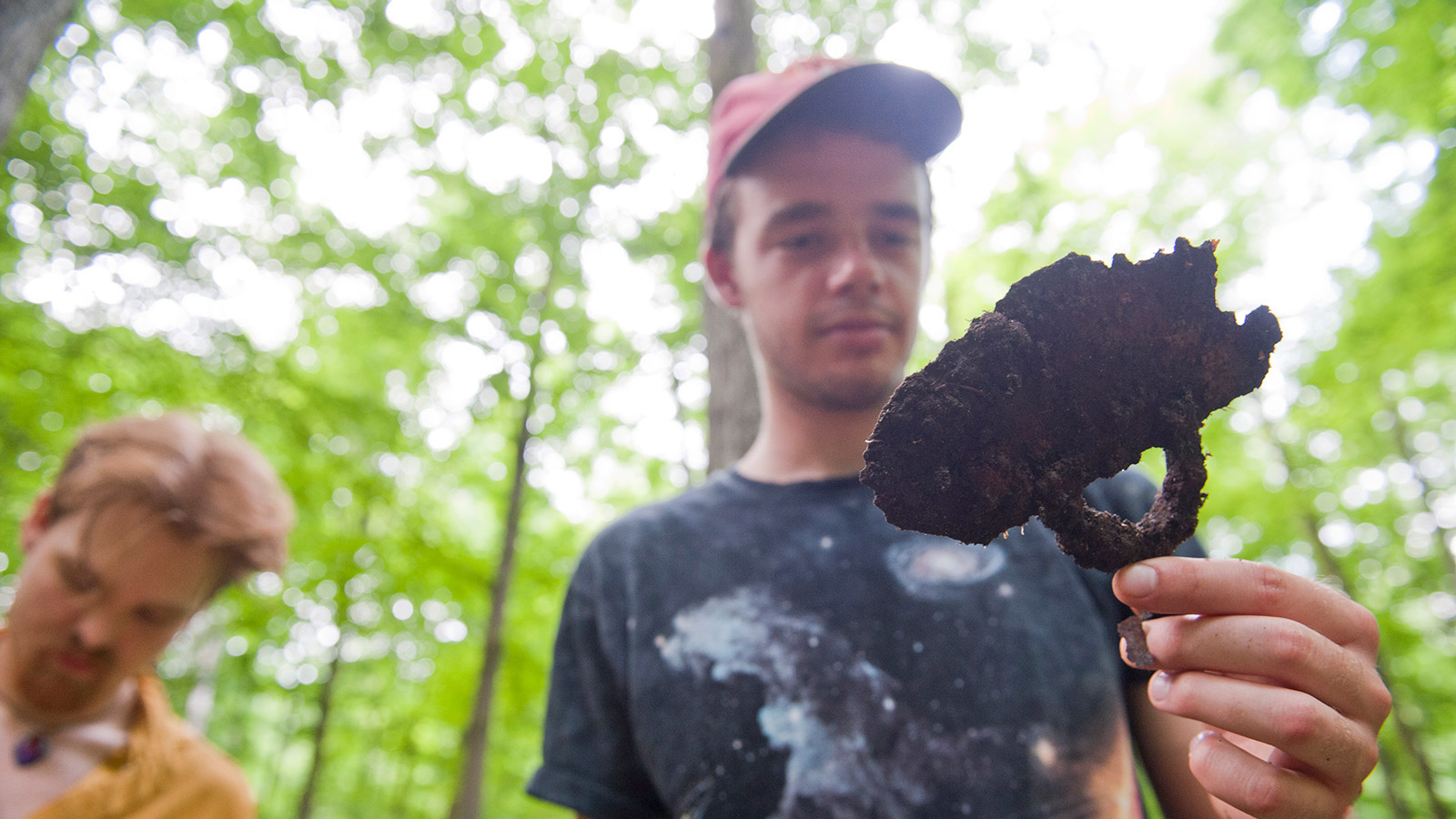Six Vassar students are spending the summer unearthing old bottles, bleach containers, shards of metal and ceramics, a couple of intact light bulbs, and lots of other decades-old debris in a remote corner of the Franklin D. Roosevelt estate in Hyde Park. Working under the direction of Associate Prof. of Anthropology April Beisaw, the students are helping the National Park Service gain a fuller understanding of what happened on FDR’s land while he and his family lived there.
“The questions we hope to answer are: What is here, where did it come from, who put it here, and how much of it relates to Roosevelt’s time?” says Beisaw, who was recently appointed by the National Park Service as chief archaeologist for the FDR site. The students are spending about half of their time this summer digging and sifting through the soil at the site and the other half in laboratories in Blodgett Hall, dating and identifying what they’ve found.

Four of the students are being paid directly by the Park Service. Another is working under the auspice of Vassar’s Undergraduate Research Summer Institute, and the other is a Vassar Ford Scholar. All of them say they’ve learned a lot about the property since they started surveying and digging on the 100-by-50-meter site in early June. “It’s great to be out here working on a project that advances historical information about President Roosevelt’s property,” says Jonathan Alperstein ’18, an anthropology major from Fishkill, NY.
Alperstein has been working with Beisaw on various projects since his first year at Vassar, and he spent last summer working with a private archaeological firm studying 13th century Pueblo artifacts in New Mexico. But he says others bring some unique skills that are helping the group identify many of the treasures they’re finding. “One of the things I love about archaeology is that it’s so interdisciplinary,” Alperstein says.
Emma Wiley ’20, a history major from Falls Church, VA, whose work is being funded through the Ford Scholars program, knows her way around the FDR archives and is adept at determining the age of many of the bottles and cans by identifying their maker’s marks. “You learn quickly on this project that details matter,” Wiley says. “Some of the most mundane objects we’re finding can be some of the most significant. Beer bottles and Clorox bottles often have dating information on them.”
URSI student Ray Cagnetta ’19, a history and earth science double major from Hollywood, FL, has a background in GIS (Geographic Information System) mapping, and she’s part of a team that is building a computer model of the site. “I knew some GIS techniques before I started on this project, but I’ve learned some new ones,” Cagnetta says. “What I love about this project is the collaboration. I knew something about soil analysis that I taught to the group and some of the others are teaching me techniques in archaeology.”
Cagnetta says everyone in the group is learning not to make assumptions. “We’ll pull a small piece of plastic out of the ground and someone will say, ‘That looks like a toothbrush,’ and someone else will say, ‘No, it looks more like a piece of some sunglasses.’ Then we’ll bring it back to the lab, and Emma (Wiley) will find a historical photo of a toothbrush that looks exactly like what we have.”

All of the students say some of the best moments come when they find something totally unexpected. “We were digging about a meter and a half down when we found two light bulbs, still intact,” says Pedro Millard ’19, an anthropology major from Brooklyn. “That tells us that this must be part of a trash heap where a lot of material was thrown away at the same time. Those bulbs would have broken if they had been sitting on the surface for a long time.”
Beisaw says documents show that Roosevelt purchased a house in 1934 near the site where the students are digging and demolished it a short time later. She says it’s possible that some of the artifacts the students are finding are from a trash heap created during the demolition.
Beisaw says she’s impressed by how much material the students have discovered and identified so far, but there’s still lots more work to do. Vassar has been designated by the National Park Service to perform scientific analysis on the Roosevelt and Vanderbilt Historic Sites, and work on the FDR property will continue throughout the coming school year and again next summer. “We’re bringing everything we find back to the lab, and over time, we’ll get a clearer picture of the story of this site,” she says.
Alperstein says the work he’s done with Beisaw has inspired him to pursue archaeology as a career. “I definitely plan to continue in this field after I graduate next spring,” he says. “Archaeology has so many components—you’re always learning something new—and it takes you to interesting places all over the world.”

